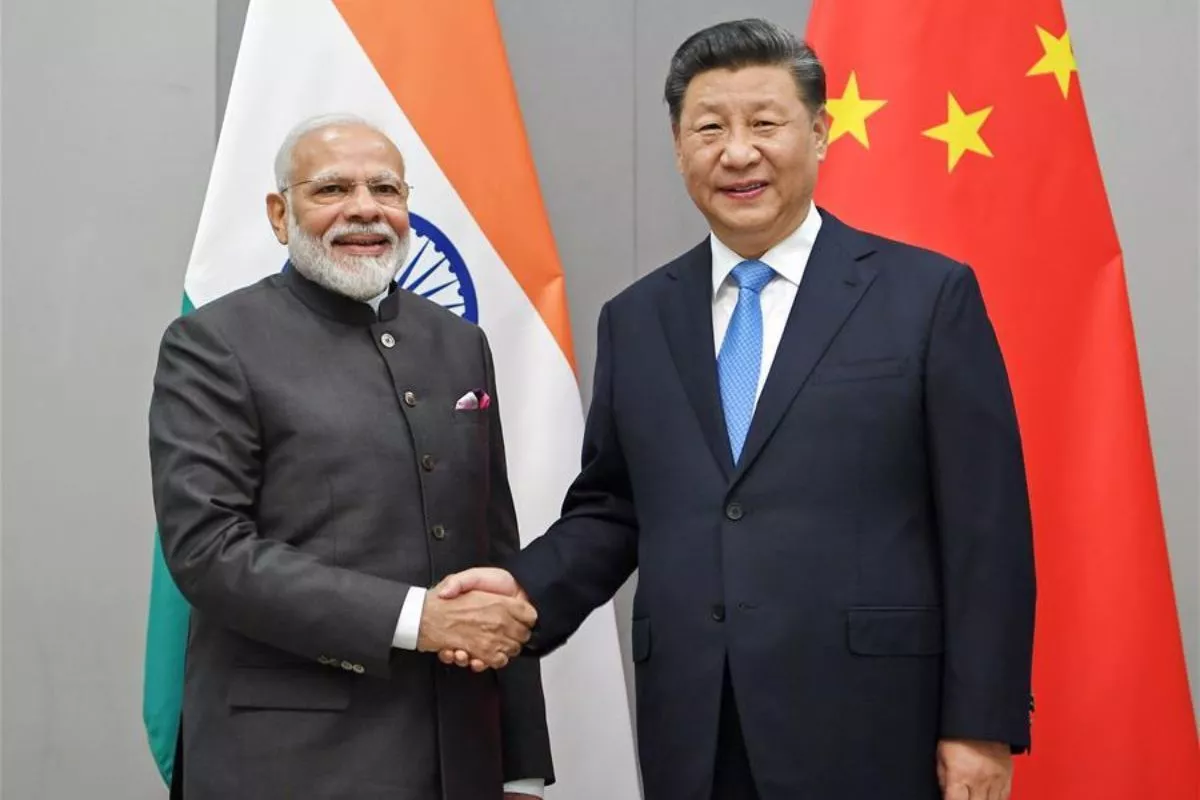
PM Modi and Xi Jinping
New Delhi: The top defense and security officials of China and India have concurred that it is imperative to reduce tensions along the Line of Actual Control (LAC) as soon as possible. Tactical commanders have been given orders to find a “workable solution.”
Sources in the defence and security establishment told ThePrint that the focus right now is to move forward on the legacy issue of Depsang Plains where both sides have blocked each other from patrolling to their claimed lines and the one at Charding Nullah Junction (CNJ) near Demchok where the Chinese, under the guise of being civilians, have set up tents in areas claimed by India.
They said that following the first ever two-day Corps Commander level talks held on 13-14 August, three days of talks were held at Major General rank and below starting last Friday during which the effort was on to thrash out a workable solution.
Despite disengagement from the Galwan Valley, Pangong Tso, Gogra (PP-17A) and Hot Springs (PP-15), the Indian and Chinese armies continue to maintain thousands of troops and equipment along the LAC.
During the Corps Commander level talks, both sides agreed to “resolve the remaining issues in an expeditious manner”. As reported first by ThePrint, both sides had agreed to freeze additional build-up of troops and equipment along the LAC.
The sources said that instructions from “top” is to move forward and ease the tensions.
These measures could include pull back of a certain number of troops and equipment, joint verification/survey of positions held so that no new posts come up along the troubled areas, creation of new limits of patrolling and certain Standard Operating Procedures (SOPs) to be followed before launching any kind of patrolling.
These developments came ahead of the visit of PM Narendra Modi and Chinese President Xi Jinping to Johannesburg for the BRICS Summit (22-24 August), where the possibility of a bilateral meeting or a pull aside between the two leaders has not been ruled out.
Xi is also slated to travel to India next month for the G-20 Summit (9-10 September). Beijing and New Delhi have not confirmed Xi’s attendance, so far.
What Maj Gen talks were about
Sources said that the talks were held at two different locations. Major General P. K. Mishra led the talks at Daulat Beg Oldie (DBO), close to the Depsang Plains. He commands the 3 Div, also known as the Trishul Division, which looks after the area.
Talks in the southern side of Eastern Ladakh was led by Major General Hariharan, who heads the Uniform force, a formation of the Rashtriya Rifles that was pulled out from Jammu and Kashmir and brought to the LAC, as reported first by ThePrint.
Sources said that on Friday, the talks focussed on proposals that were decided to be discussed during the Corps Commander-level talks.
On Saturday, the Maj Generals went back to their tactical commands to thrash out the issues and held another round of discussions on Sunday.
Sources said that while Demchok is a relatively small issue, the problem is with Depsang and the Chinese insistence on reciprocity when it comes to patrolling claimed areas. As reported by ThePrint earlier, the LAC is disputed at Depsang Plains, which fall under India’s Sub Sector North (SSN), as elsewhere.
The SSN is sandwiched between the Siachen Glacier on one side and Chinese-controlled Aksai Chin on the other, making it strategically important.
According to the sources, tensions at Depsang Plains can be traced to China’s 18-km incursion into the area, which is close to the strategic DBO, in 2013, and the 2017 Doklam stand-off.
In the Depsang Plains, the patrolling points are a little away from the perceived LAC like in other areas, and this is called the limit of patrolling. Soldiers don’t go beyond the points, even though the LAC is still ahead.
However, the LAC perception in Depsang is starkly different between China and India. According to locally established agreements, both sides were allowed patrolling until certain areas that fell into individual perceptions of the LAC, but sources said the practice “came under stress” after the Doklam stand-off.
Sources said that the Chinese have not built up in India’s claimed areas in Depsang, but have installed cameras and blocked access because of a road constructed by them in 2013 behind the Bottleneck area in what is known as the Raki Nala region.
Indian troopers used to go by foot beyond the Bottleneck area, through which, as the name suggests, vehicles are not accessible.
Just a few hundred metres from the Bottleneck area is a place called Y junction. Indian soldiers used to patrol PPs 10, 11, 11A, 12, and 13, but the Chinese have now blocked the passage to these points.
The ‘Y’ Junction is the starting point of the two routes. The north route, following the Raki Nala, goes towards PP10 and the southeast route goes towards PP13 along what is known as Jiwan Nala.
A 24-hour squad from the Chinese is preventing Indian access to the plains. Every time the camera senses movement, they rapidly approach and block the entrance using the road.
According to the sources, the Chinese are arguing that they should be able to patrol up until the boundaries of their claims.
After the Bottleneck area, the Chinese claim line is located well into Indian-held territory, they claimed, and is around 1.5 km away from an Indian military camp in the Burtse region.

















